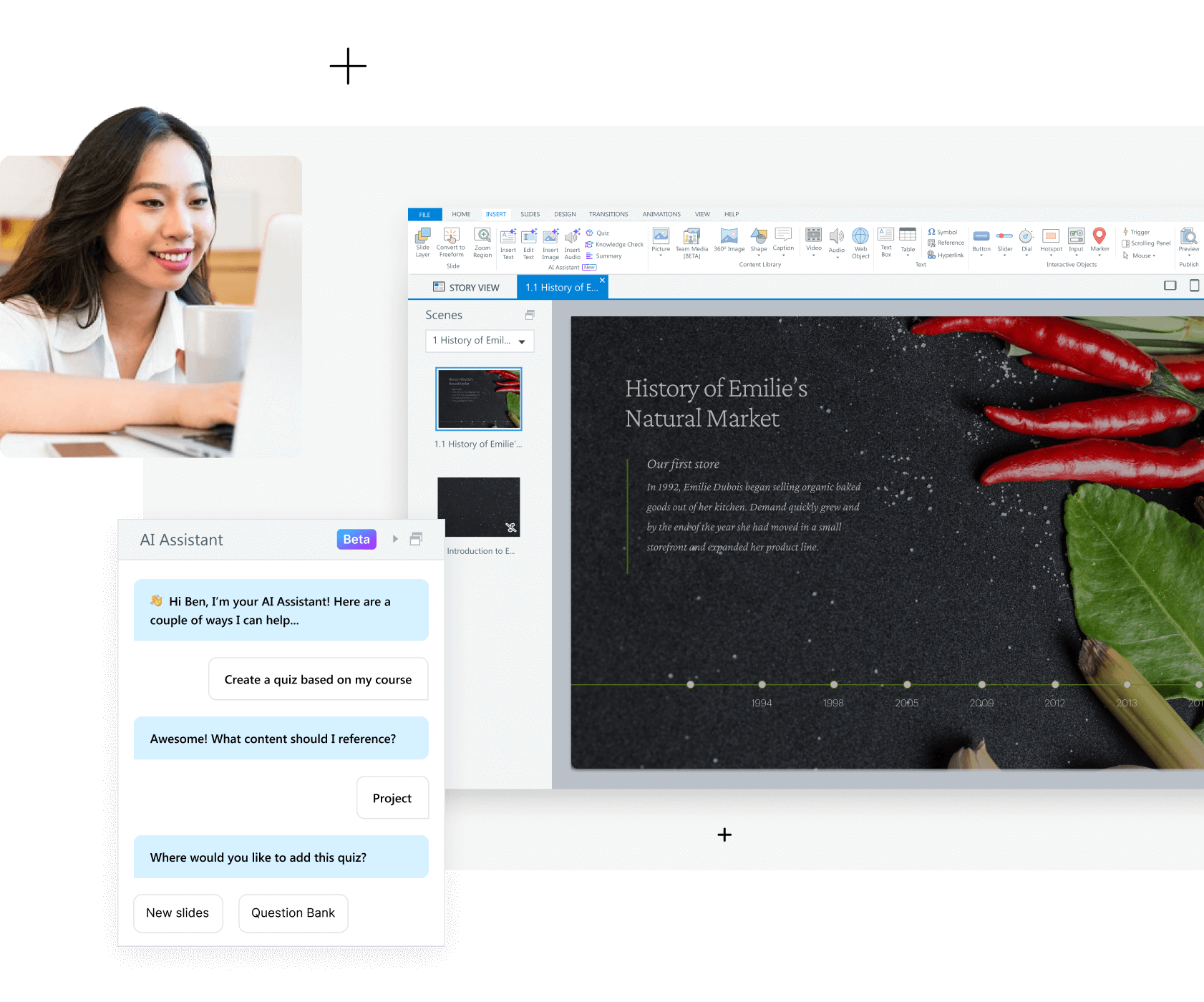The Art of Storytelling: Using Case Studies to Transform Educational Content in E-Learning
Meta Description: Explore how storytelling can revolutionize e-learning through engaging narratives and impactful case studies. Discover practical strategies for educators and instructional designers to enhance learner engagement and retention.
In today's digital age, e-learning is an ever-evolving landscape, posing both opportunities and challenges for educators. The integration of effective storytelling in educational content has emerged as a transformative approach to enhance learner engagement and retention. This article delves into "The Art of Storytelling: Using Case Studies to Transform Educational Content in E-Learning," aiming to inform and inspire educators, instructional designers, corporate trainers, and other stakeholders in the realm of education.
About the Author: Eliana Gruber has over 5 years of experience in educational technology and instructional design, helping professional development programs embrace innovative strategies to enhance learning experiences.
The Essence of Storytelling in E-Learning
Defining Storytelling in E-Learning
Storytelling in e-learning is about weaving narratives into educational content to create more engaging and relatable experiences for learners. Core components of storytelling include:
- Characters: Relatable protagonists that learners can connect with.
- Conflict: Challenges that characters face, making the narrative compelling.
- Resolution: Solutions or lessons learned, providing closure and key insights.
This approach aligns with educational theories such as constructivism, which posits that learning is most effective when individuals are actively engaged in meaningful experiences.
The Power of Case Studies
Showcasing Successful Storytelling
Real-world examples are vital in illustrating the power of storytelling within e-learning. Consider the following case studies:
Udemy: Instructors frequently share personal stories about their journeys, enhancing relatability and engagement. For instance, a course on photography might introduce the instructor's path to mastering the art, thereby inspiring learners to pursue their own passions.
Khan Academy: This platform employs storytelling techniques in various subjects, using narrative elements in their math and science videos to keep students captivated and enhance retention.
Coursera: Courses often include interviews with industry experts that narrate their professional experiences, bridging the gap between theoretical knowledge and real-world applications.
Impact of Storytelling on Engagement
Engaging Learners Effectively
Statistics reveal that storytelling dramatically impacts engagement and retention among learners. Research published in the Journal of Educational Psychology indicates that while people remember only about 10% of information presented in traditional formats, retention skyrockets to 65% when embedded in engaging narratives.
Moreover, insights from cognitive science affirm that storytelling activates various parts of the brain associated with emotion and memory. A study from the University of New Mexico discovered that storytelling stimulates oxytocin release, enhancing feelings of empathy and connection with the material.
Addressing E-Learning Challenges
E-learning often grapples with low completion rates and limited interaction. By employing storytelling techniques, educators can create dynamic learning experiences that captivate and motivate students to engage with the material actively.
For example, a case study from the Learning & Development division at Accenture showed that teams using storytelling in training reported an astonishing 85% higher satisfaction rate and improved retention of the information shared.
Strategies for Implementing Storytelling
Techniques to Enhance Learning
Educators can easily integrate storytelling into their teaching methods by applying certain techniques:
- Create Relatable Characters: Develop characters that embody the learner's aspirations or challenges.
- Use Multimedia Elements: Incorporate videos, podcasts, and interactive graphics to enrich storytelling experiences.
- Interactive Scenarios: Design scenarios that encourage learners to make choices, thereby increasing engagement and involvement in the story.
Recommended Tools and Resources
Several resources and tools can assist in developing narrative-driven e-learning content:
Articulate Storyline: A powerful tool allowing instructional designers to create interactive story scenarios.

Visit Articulate StorylineAdobe Captivate: A user-friendly platform for developing multimedia-rich narratives for e-learning modules.
Visit Adobe CaptivatePowtoon: Enables educators to create animated videos that effectively convey their story.

Visit Powtoon
Building Community and Practice
Joining professional learning networks, such as the International Society for Technology in Education (ISTE), can help stakeholders share insights, innovative practices, and success stories related to storytelling in e-learning.
Inspirational Quotes and Anecdotes
Including powerful insights from experts can strengthen the blog's message. For instance, educational thought leader Richard Mayer states, “We learn better from words and pictures than from words alone.”
Additionally, sharing an anecdote about a high school teacher who transformed their class atmosphere through storytelling can highlight the significant changes that effective narratives can bring to educational settings.
Summary of Benefits
In summary, here are some key benefits of integrating storytelling into e-learning:
- Increased Engagement: Engaging narratives captivate learners, drawing them into the content.
- Enhanced Retention: Storytelling can significantly improve information retention and recall.
- Motivated Learners: Relatable stories inspire learners to take ownership of their education.
- Practical Applications: Real-world case studies demonstrate effective storytelling strategies.
- Stronger Connections: Narratives foster emotional connections between learners and the content.
By leveraging storytelling within e-learning environments, educators and instructional designers have the unique opportunity to create impactful, meaningful content that not only resonates with learners but also inspires lifelong learning. As you explore the art of storytelling, consider its transformative ability to enrich educational experiences in an increasingly digital world.
By adopting these strategies, educators can revolutionize their approach to teaching, foster student engagement and motivation, and pave the way for innovative learning experiences that benefit both students and instructors. Embrace the narrative spirit and embark on this journey toward a more enriching educational landscape!

